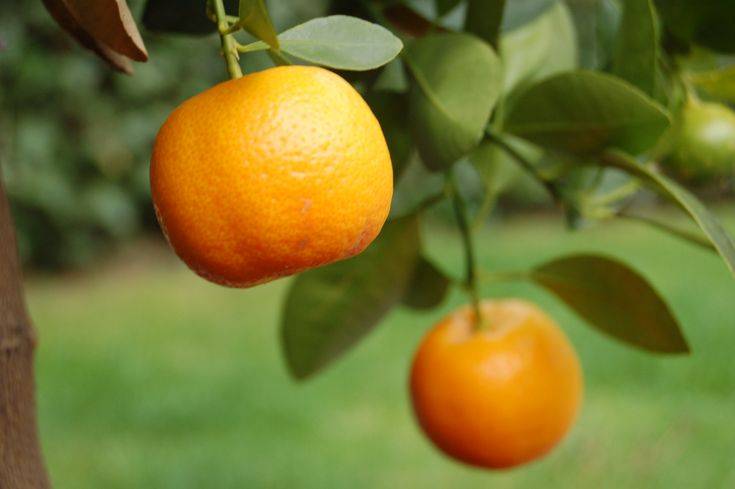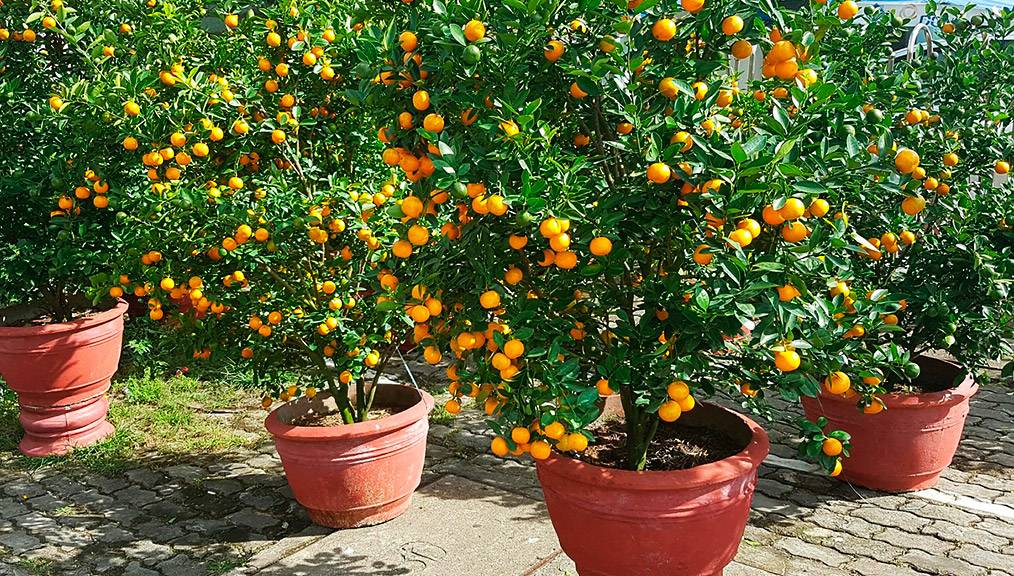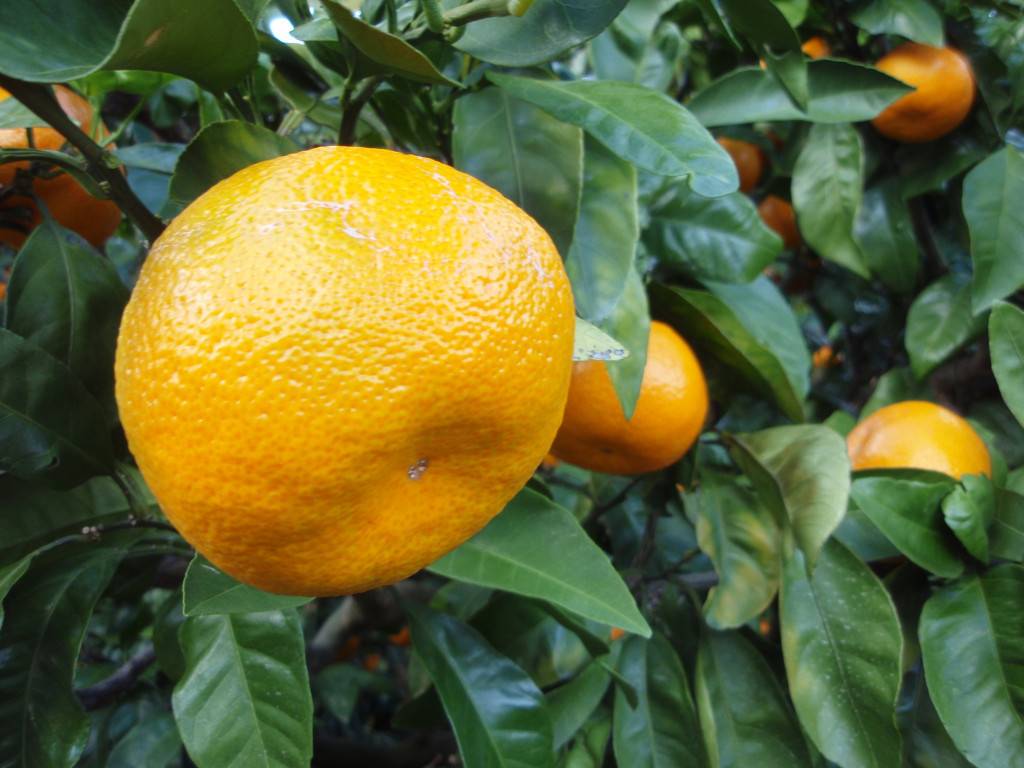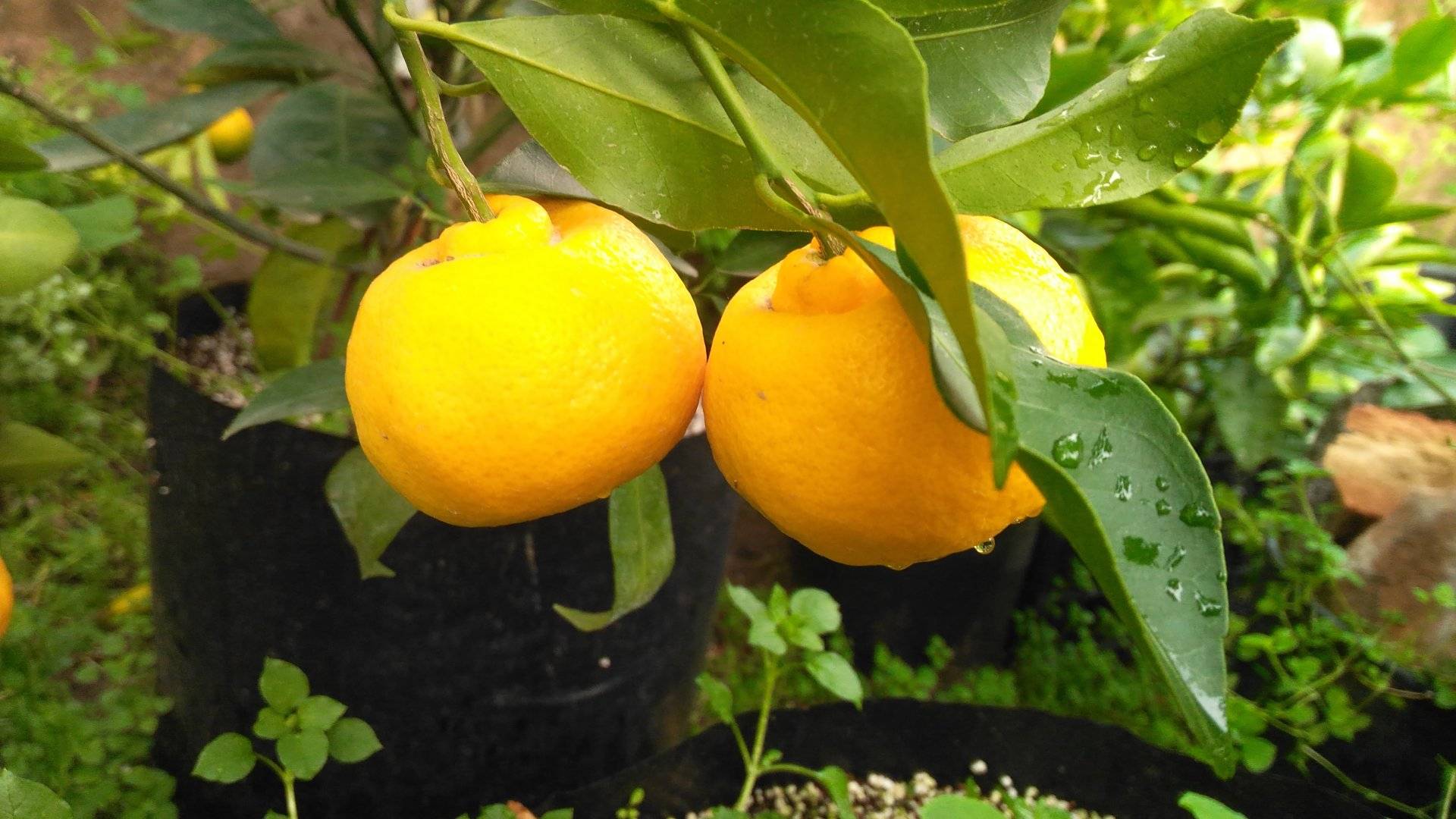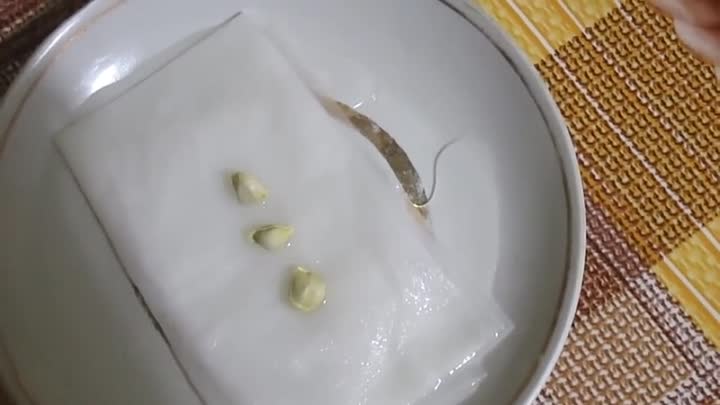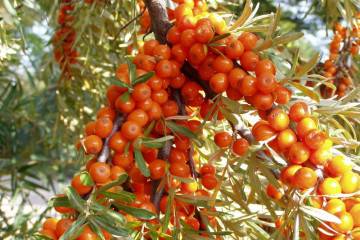Tangerine tree - home care
Content:
There is a great temptation, after eating a sweet fragrant tangerine, to stick a bone into the ground in order to get a tree after a while. However, today citrus crops can be purchased as a seedling in a garden store, but the choice of varieties is quite large.
Tangerine tree - home care
Citrus home plants cannot be called unpretentious. On the contrary, they are very demanding on temperature, humidity, lighting, soil composition. But with full adherence to the rules of agricultural technology, the plant will grow, bloom and bear fruit even on an ordinary windowsill.
How mandarin grows in nature
The evergreen mandarin tree (lat.Citrus reticulata) belongs to the Rutaceae family (lat.Rutaceae). It can grow up to 5 m tall, and give up to 7 thousand fruits per year. All modern varieties and hybrids come from wild forms native to Southeast Asia. Such cold-resistant varieties can withstand temperatures as low as -8 ° C. With the help of pruning, their branching is strengthened, giving the desired shape to the crown. The world's northernmost mandarin is grown on the Black Sea coast.
Plant flower descriptions
Single or paired buds are usually formed in the leaf axils. In an ordinary mandarin, 5 white or cream petals form a corolla, in the center of which are stamens. The anthers of the stamens are often underdeveloped. A flower can give a fruit in which there will be no seeds (a feature of the Unshiu variety series). For this reason, the tree bears fruit alone, although there are species that need cross-pollination.
In the subtropics, tangerines bloom from February to April. In different varieties, flowering periods vary widely, and there are also remontant ones, which simultaneously have flowers and fruits on the branches. The traditional ripening period is from November to December.
In tropical climates, trees bloom several times throughout the year without any stimulation. Fruit ripening is long, it takes up to 10 months. The first time young trees bloom at the age of 5-7 years, but the grafted seedlings bloom for 2-3 years.
Types and varieties for indoor cultivation
Species forms, hybrids, various varieties of mandarin are grown in pots. Their height does not exceed 1.5 m, and the crown is formed by cutting into a tree or bush. It is not difficult to achieve their fruiting at home.
Calamondin
This is also called citrofortunella (lat.Citrofortunella microcarpa), a representative of the Rute family. It is a hybrid of kumquat and mandarin. Its small dark green glossy leaves have a pleasant aroma. The abundantly flowering and fruiting tree feels great in indoor conditions.
Home Pavlovsky
A remontant hybrid of a mandarin with a pomelo was bred in Pavlovo. A tree up to 1 m high blooms with large (up to 3 cm in diameter) flowers of 4-8 petals.The buds are pink-purple, and when fully dissolved, they are white. Fruits are sweet, consist of 12 lobules, with a total weight of up to 80 g and up to 7 cm in diameter.
Anniversary
A plant very similar to the classic orange. It is a hybrid of Miagawa Wase mandarin with orange. Propagated by cuttings. The fruits ripen in October.
Kovano-Vasya
The very popular all over the world variety Kovano-Vase (Cītrus unshiu Kawano Wase) is a mandarin belonging to the large unshiu group. The group includes Vasya's line, which currently includes 7 varieties, among which Kovano is the ancestor.
It has been cultivated in the USSR since 1937. The variety was created for pot cultivation, reaches full maturity in 3 years. 5-petal flower up to 4.5 cm in diameter gives sweet large fruits of 8-13 lobules, ripening in just 5-6 months.
The emperor
A popular decorative variety of indoor mandarin. Low trees bloom willingly from the 3rd year of life. The plant gives bountiful harvests from December to January. The fruits are covered with a thick, fragrant rind that easily separates from the pulp.
Unshiu
A distinctive feature of the fruits of this series is the fruits of a slightly flattened shape, in which there may be no seeds at all or very few of them. The color of the peel and pulp is yellow-orange. The taste is sweet and sour. All representatives are cultivated on an industrial scale in Japan, and in our country - in the Caucasus.
Imperial
Favorably differs against the background of other indoor varieties in the size of the fruits. They grow up to 80 g in weight, have a very sweet and tender pulp. Traditionally, ripening occurs in November.
Shiva mikan
A very fast growing tree, while remaining compact. The leaves are large, dark green. The fruit is small in size, tastes sweet and sour. In indoor culture it is appreciated for its decorative effect, especially during abundant and lush flowering, accompanied by a strong pleasant citrus aroma.
Citrofortunella
So in Latin they call calamondin, so there is no difference, we are talking about the same plant, which is excellent for growing indoors.
Tangerine tree care
The rules of care are common for the entire large group of tangerines and hybrids. Some modern varieties are less capricious, but their preferences are the same.
Watering mode
You can water tangerines only with warm water, which is heated to 30 ° C, before boiling and cooling. The ground should always be slightly damp, but not wet. All year round, the crown must be sprayed: in winter - in the morning and in the evening, in summer up to 4-6 times a day.
Top dressing
In order not to harm the plant, it is recommended to purchase a specialized complex mineral fertilizer for citrus fruits for top dressing. Fertilize tangerine during watering, not exceeding the specified concentration, so as not to scorch the roots.
Features of care during the flowering period
A key condition for bud formation is plenty of sunlight. The pots are placed on the southern and southeastern windowsills. If the daylight hours are too short, artificial lighting is organized. The temperature should not be increased, it should be even throughout the warm season.
Features of care during the rest period
With the onset of winter, the temperature can be lowered to +14 ° C. This period is required for mandarin in order to bear fruit in the next season. The number of waterings is reduced, but the soil does not completely dry out. If there are fruits on the branches, such a regime will not damage their ripening.
From mid-December to mid-February, the backlight can be turned off. To stimulate abundant flowering in spring, the ends of the shoots should be cut off.
Preparing for winter
In autumn, the frequency of watering is gradually reduced, preparing the tree for wintering. Spraying is also done less often, leaving only morning and evening, but they do not stop taking care of the plant. It is very good during this preparatory period to carry out planned preventive spraying against pests with insecticides and acaricides (for example, "Fitoverm"). This is done even in the absence of visible signs of infection, since it is much more difficult to treat an already infected tree.
How to grow a tangerine from a bone at home
Each seed taken from a mature fruit has the potential to give life to a tree. Of course, use only poured seeds that are dense to the touch. If you throw them into a glass of water, they will drown.
Conditions for germinating mandarin seeds
In order for the seed to germinate, it must first be soaked. To do this, for three days the germinated seeds are wrapped in a damp cloth or placed on a wet cotton pad (but not in a glass of water!). The correct temperature at this time should be room temperature, and the plate is placed on a brightly lit windowsill.
Stages of sprouting mandarin seeds
Being moistened, placed in loose soil, tangerine seeds first swell, and then sprouts hatch from them. Different varieties take different amounts of time (usually at least 2 weeks).
The pot with the previously soaked seeds placed in it must be kept in the light and warm (about + 20-25 ° C), watering regularly. Covering the top with transparent film or glass is not at all necessary. It is enough to check the moisture content of the soil every day, and when it dries, moisten it by spraying.
How to choose the fruit of the right ripeness and separate the seed
For sowing, seeds are chosen from a well-ripe (maybe even rotten) fruit, from which you can effortlessly remove a bright orange or reddish peel without green spots. Unripe citruses are not a finished product, the seeds inside are still in the stage of formation, so even with successful germination, the plants will appear weak from them.
The seeds are thoroughly washed and rinsed in a solution of fungicide or potassium permanganate. Then they are dried. After that, you can try to plant and germinate them.
Preparing a place for a tangerine sprout
Bright sunlight and the absence of cool drafts are very important for sprouts, to which they react by dropping foliage. If the daylight hours are short, set the backlight. Every day, sprouts that appear in pots should be sprayed with warm water from a spray bottle.
Preparation of soil mixture
The optimum acid-base reaction of the soil is pH = 5.5-6.5. This indicator is important, since acidic soil is categorically unsuitable for citrus fruits. The soil mixture for planting is prepared with the addition of humus, sand, vermiculite, wood ash. It is better to do it yourself in order to get a loose air and moisture permeable substrate.
Pot selection
You don't need to plant sprouts in large pots. If the amount of soil significantly exceeds the size of the young root system, then the irrigation regime will inevitably be disrupted. Ideally, the soil should not dry out, it should be drained by the roots, actively absorbing moisture. Otherwise, the earth will turn sour, which will lead to the creation of destructive conditions for the mandarin.
The volume of the soil should be slightly larger than the root system. For the first months, a 100 gram plastic cup will work.As soon as the roots hit the bottom, the tangerine should be transplanted.
It is much more important that there are large holes at the bottom of the planting container for the drain of excess moisture. When planting, it will not hurt to place a thin layer of expanded clay or coarse sand drainage on the bottom. Even at a very young age (5-6 months), seedlings can already be pinched to form a crown and grafted, not forgetting to feed them every 2 weeks.
Mandarin seedling watering mode
It is difficult to learn how to maintain optimal soil moisture in a tangerine pot, but this will have to be done. In hot weather, plants are watered every day, as they absorb moisture very actively, but keeping their roots in wet soil is harmful. Due to waterlogging in the heat, various fungal diseases develop, due to which tangerines can die. This is why antifungal medications are added to the water from time to time.
In indoor conditions, a tangerine can cause a lot of trouble, you should take care of it, guided by an impressive list of strict rules (step by step instructions). This scares off newbies. And yet the beauty of trees, their fragrant leaves and flowers, attractive fruits - that is why they are very loved and grown all over the world in indoor conditions.



